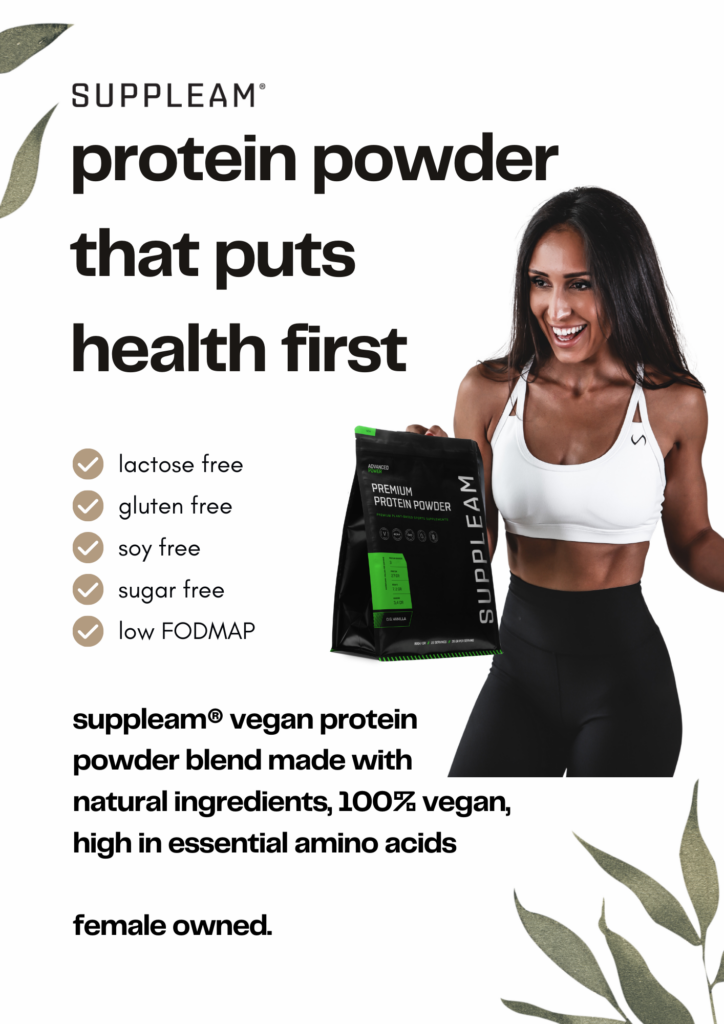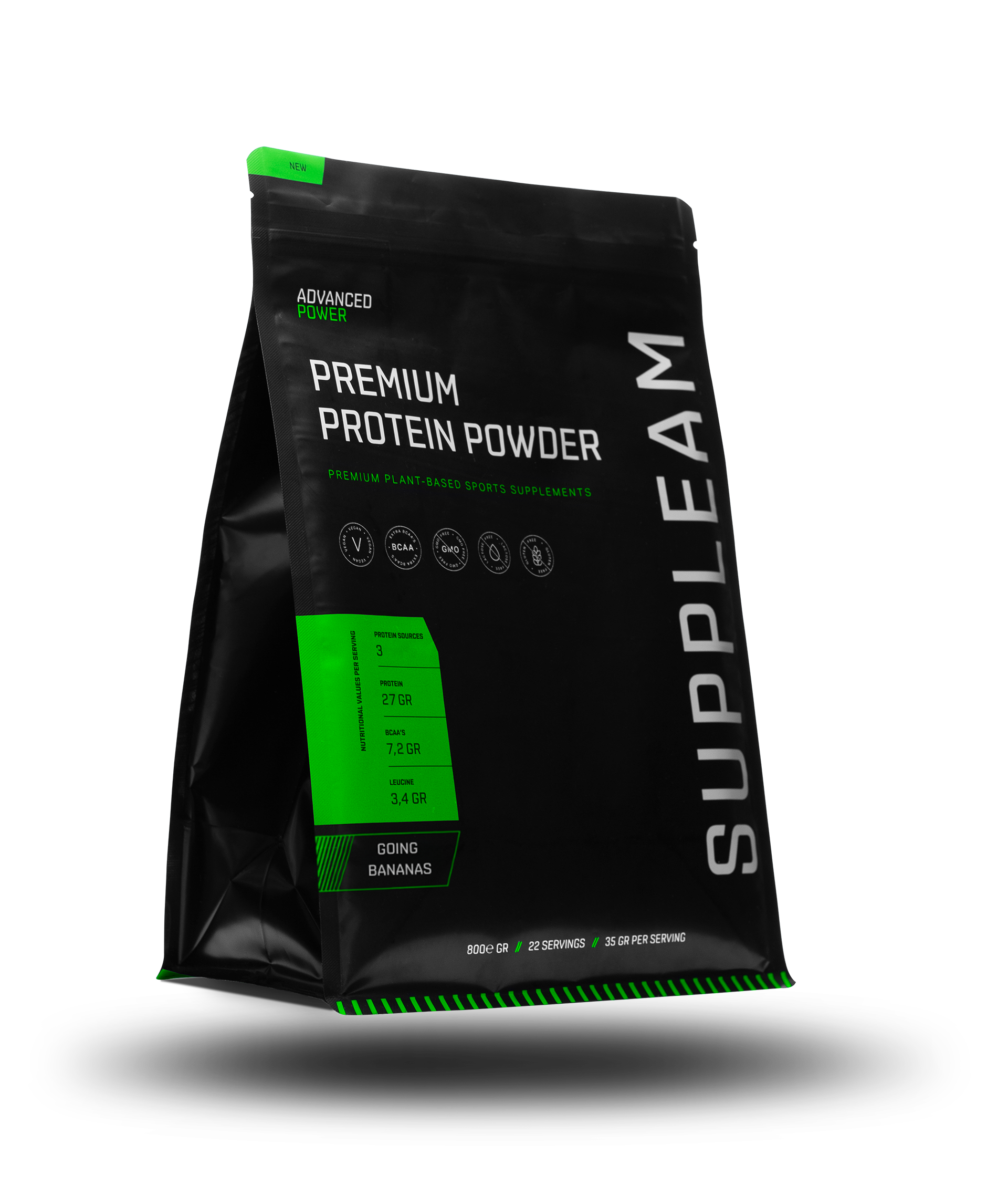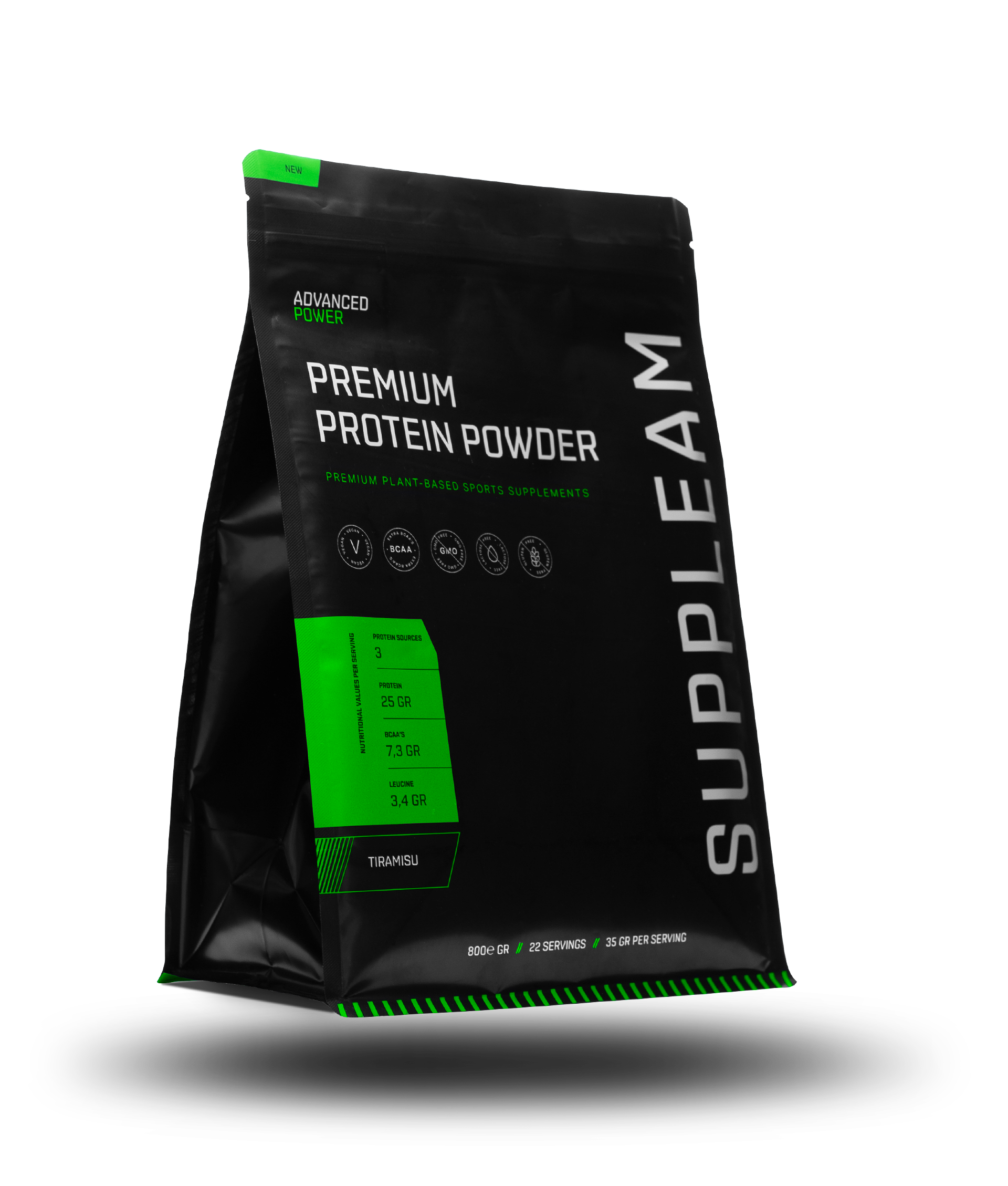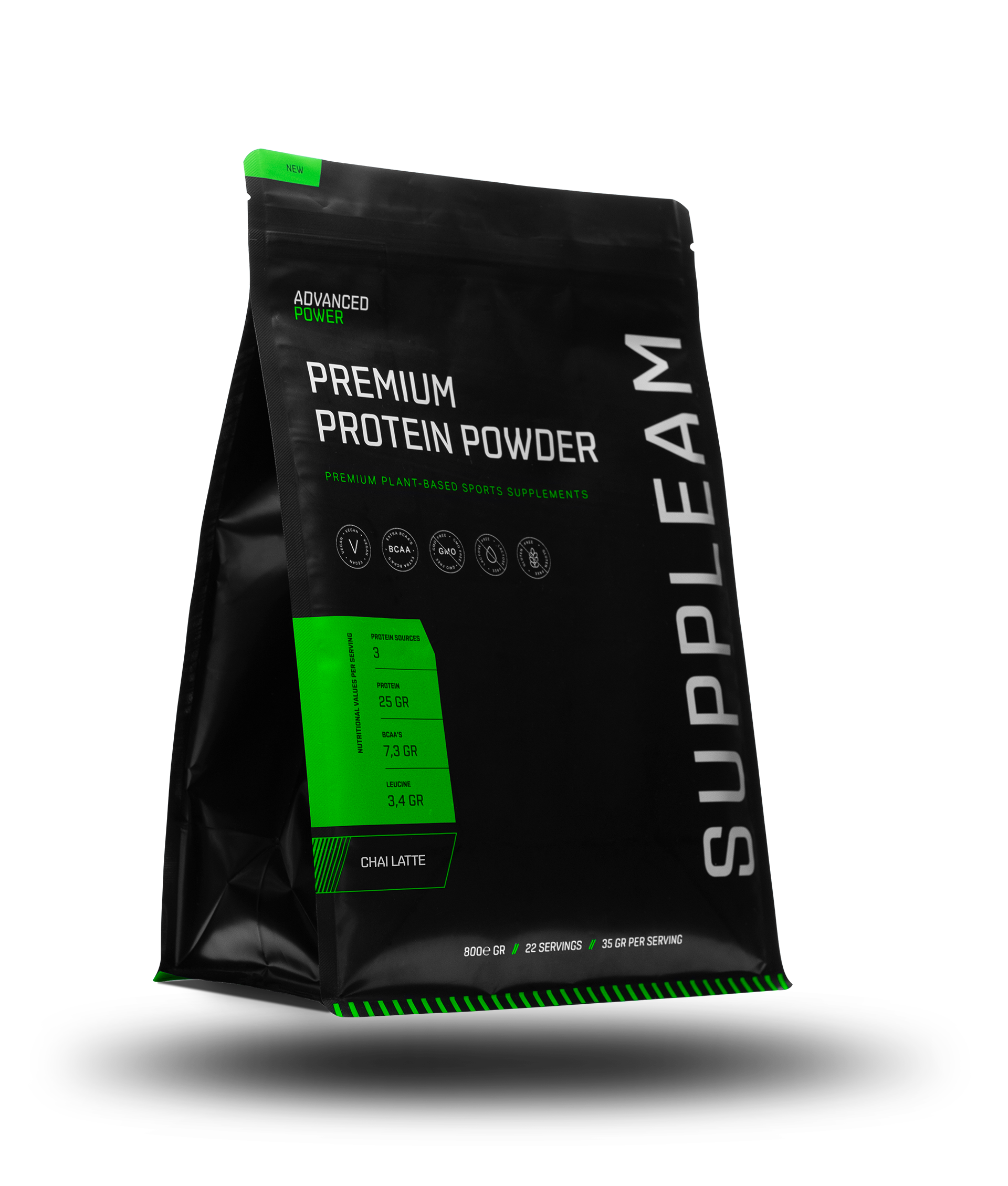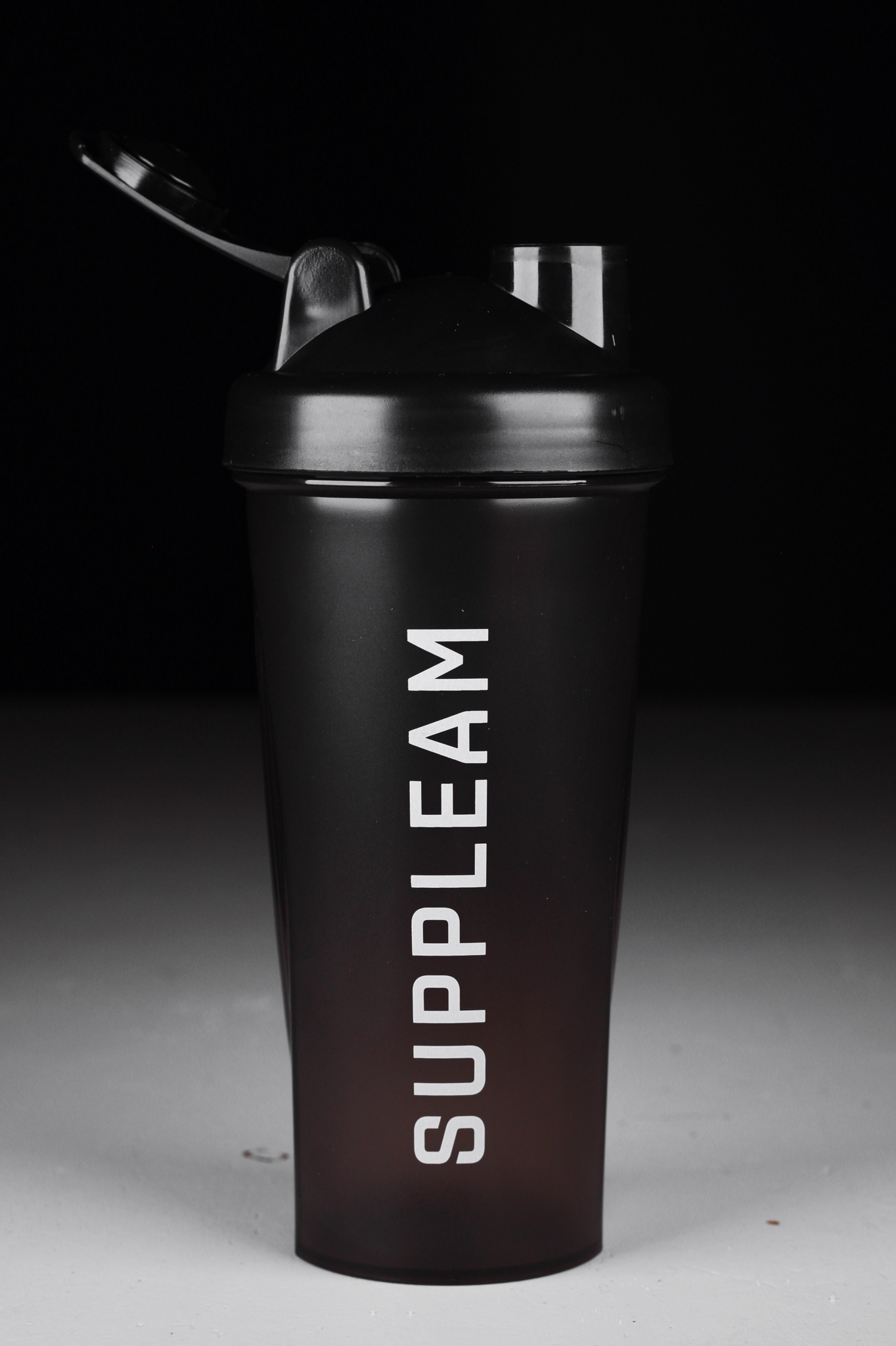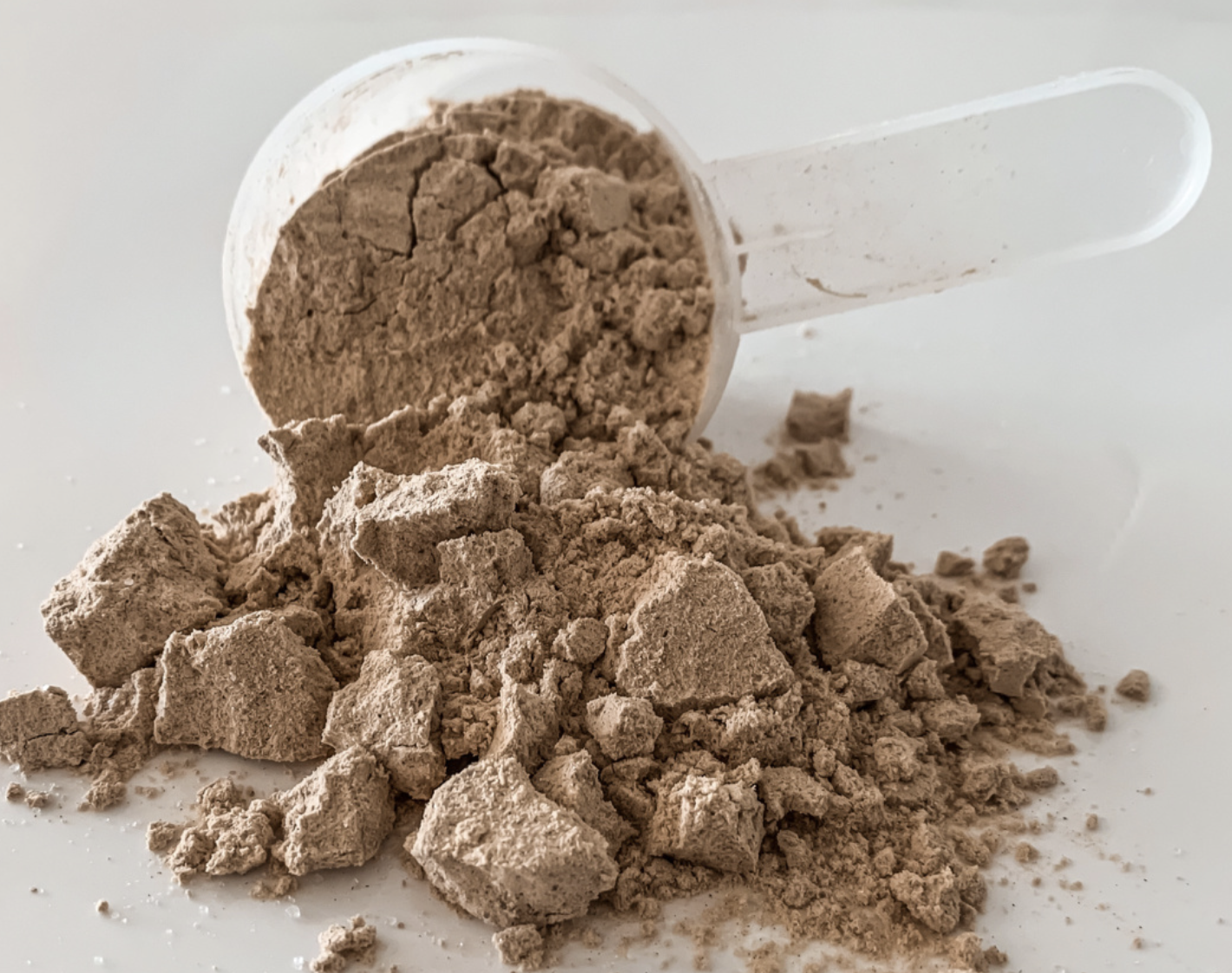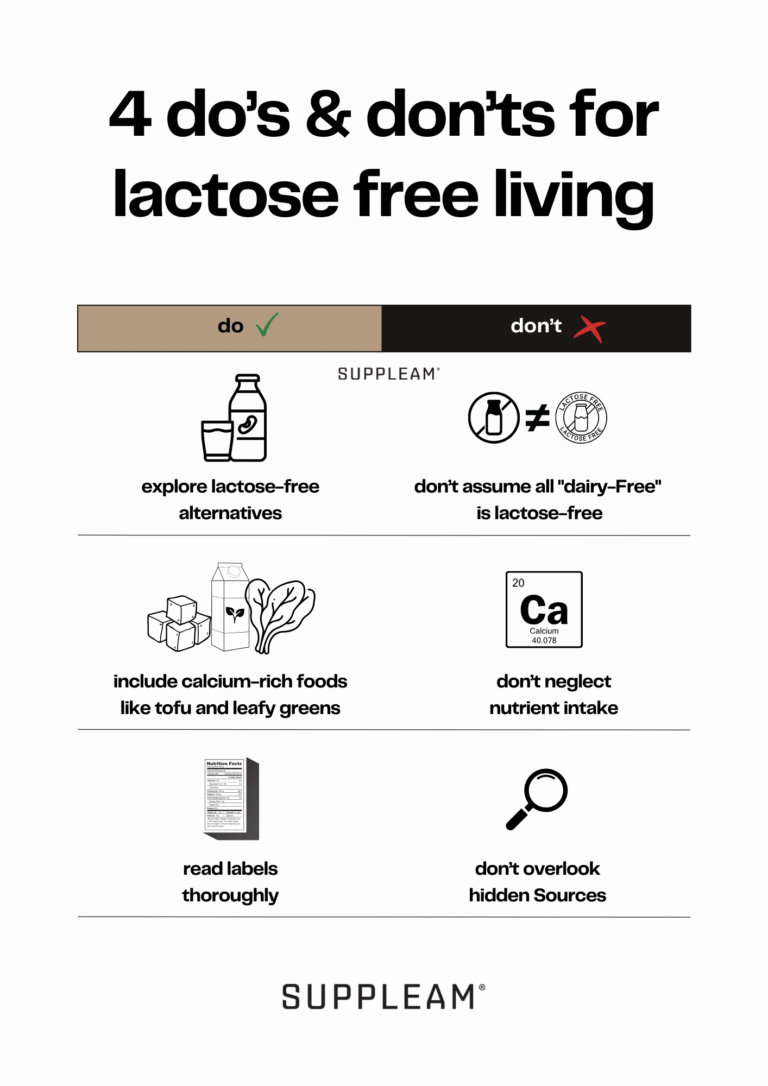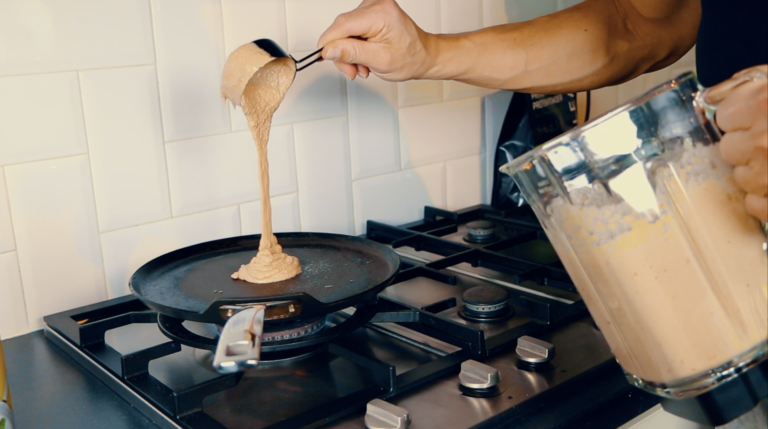Protein powder has become a staple in many kitchen cabinets. But, how is protein powder made? In this article, we take a dive into the production process, from raw material to sweeteners.
Written by A.L. Oosterling BSc sports dietitian, NSCA-CPT, ISAK anthropometrist
Step 1. Choosing raw materials: What is protein powder made of?
The basis of any protein powder begins with the choice of raw materials. In this selection, you have two options: entirely plant-based or entirely animal-based. Plant-Based protein powders are often made of soy, pea, brown rice, sunflower seed and hemp. The most commonly used raw material for animal protein is cow’s milk, but there is also protein powder based on egg and meat. So, there are many types of protein powders.
Step 2. Separating protein from carbohydrates and fats
After this, the process of extracting the protein from the basic raw material begins. The raw material is cleaned, ground, purified, filtered and concentrated to the desired result. In the end, what remains is a fine powder, a concentrate, isolate or hydrsolysate that is mostly high in protein and low in carbohydrates or fats.
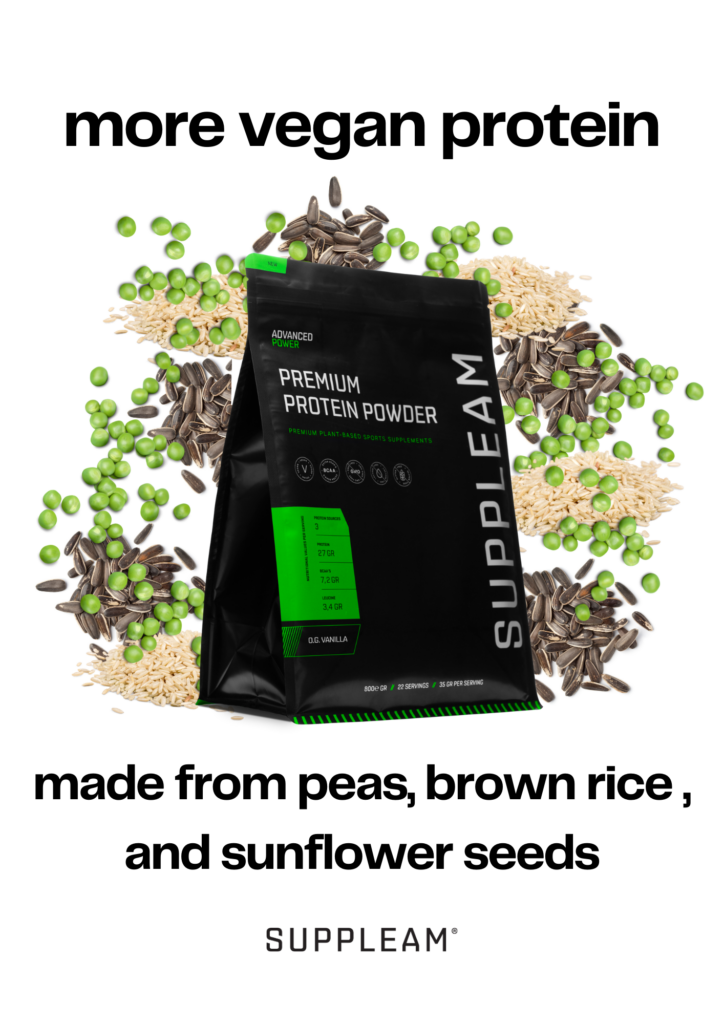
What is the difference between concentrate, isolate and hydrolysate protein powders?
Protein concentrates, isolates and hydrolysates are all forms of protein powders used in the food and fitness industry. They differ mainly in the degree of digestibility and structure.
Protein powder: concentrate
- This is a form of protein in which the process of filtration is less strict than in isolate and hydrolysate.
- Protein concentrate generally contains slightly higher levels of fats and carbohydrates compared to isolate.
Protein powder: Isolate
- Protein isolates undergo more strict filtration than concentrates. As a result, the protein content is higher and the amounts of fats and carbohydrates are lower.
- This is the most popular form of protein for protein powders and gives a creamy shake when mixed with water.
Proteinpowder: hydrolysate
- The process called hydrolysis breaks down protein into even smaller pieces than an isolate.
- Because of the “pre-digestion” in the hydrolysis process, protein hydrolysate is often considered as “faster absorbing” than a concentrate or isolate.
- Protein hydrolysates give a clear/translucent lemonade-like protein when mixed with water. A perfect alternative to traditional creamy shakes.
Step 3. (Optional) add additional amino acids or other supplements to protein powder
An optional step in the production of protein powders is to enrich them with additional nutrients such as amino acids, vitamins, minerals, and other supplements. When producing the best possible quality vegan protein powders, adding additional essential amino acids is important. Vegan protein sources often do not contain all the essential amino acids in the most optimal amounts for muscle and recovery. Adding additional essential amino acids enriches and optimizes the amino acid profile.
Step 4. Add flavor to protein powder
Sometimes protein powder is flavorless, but usually, it comes in flavors like vanilla, chocolate, banana, or strawberry. The choices are endless; for example, SUPPLEAM premium vegan protein powder caries luxurious and unique flavors such as chai latteandtiramisu (cocoa/Arabica coffee). The types of flavor additives can really differ. For instance, a company might use real vanilla bean powder for a vanilla-flavored protein powder, or they might go for a (often cheaper) option, like artificial vanilla flavoring.
Sweeteners
Different brands of protein powder can use a wide variety of sweeteners. There are more than 15 types of sweeteners approved in Europe. Some sweeteners are artificial and others are derived from plants (steviol glycosides), fruits (erythritol) and mushrooms (mannitol). Manufacturers’ decision to choose a particular sweetener is influenced primarily by cost and flavor experience.
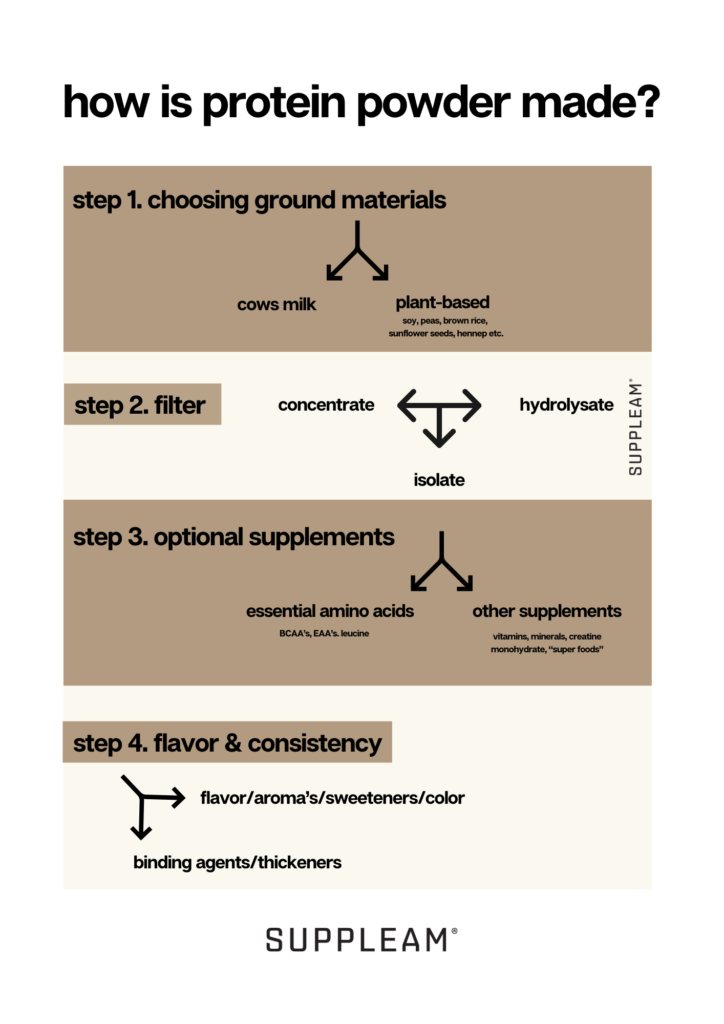
How to choose the best protein powder? – 6 tips
Choose a protein powder that suits your goals, personal preferences and takes into account your health and well-being. Here are 6 tips to help you make an informed choice:
- Pay attention to the type of protein: There are different sources of protein, such as whey, casein, soy, pea, rice and hemp. Whey and casein come from milk. Plant-based options have a wide range of ingredients. Soy-based protein powder might not be the top pick because lots of plant-based proteins already have soy in them. For both variety and the highest quality protein, consider a protein powder that has pea protein as its base and is enriched with essential amino acids. Another excellent option is a mix of pea protein and rice protein, also supplemented with essential amino acids, to get an optimal amino acid profile.
- Keep allergies and intolerances in mind: If you are lactose intolerant or have an allergy to certain ingredients, choose a protein powder that fits your dietary restrictions, such as a lactose-free plant-based protein powder.
- Check the ingredient list: Look for a protein powder with as few additives as possible such as sugars, artificial sweeteners, dyes and preservatives.
- Natural Taste: Taste is a personal preference, but protein powders that use natural ingredients like real vanilla bean powder or other herbs and spices are obviously worth trying!
- Cheap is sometimes expensive: beware of budget protein powders. Choose quality ingredients to find the best value for your money.
- Consider sustainability: In addition to the above factors, it is important to consider the product’s impact on the environment. Look for brands that are committed to sustainable practices, such as offering only plant-based protein powders, using non-GMO ingredients, and supporting charities. Plant-based protein powders are often considered a more sustainable choice because of their lower environmental impact compared to animal protein sources. Furthermore, companies committed to reducing their carbon footprint or contributing to reforestation projects may be a better choice for environmentally conscious consumers.
Conclusion
Making protein powder is a complex process. It starts with the choice between plant-based or animal-based ground materials. Then starts the purifying of the proteins and turning them into a fine powder, either as concentrate, isolate, or hydrolysate.
If you value healthy, nutritious and environmentally friendly eating, understanding the production of a protein powder gives you the knowledge to make conscious choices. Whatever protein powder you choose, there is a thoughtful process behind every bag of protein powder.
Our SUPPLEAM® 100% vegan protein powder is designed to give you the best nutritional value to suit your health and fitness goals.
